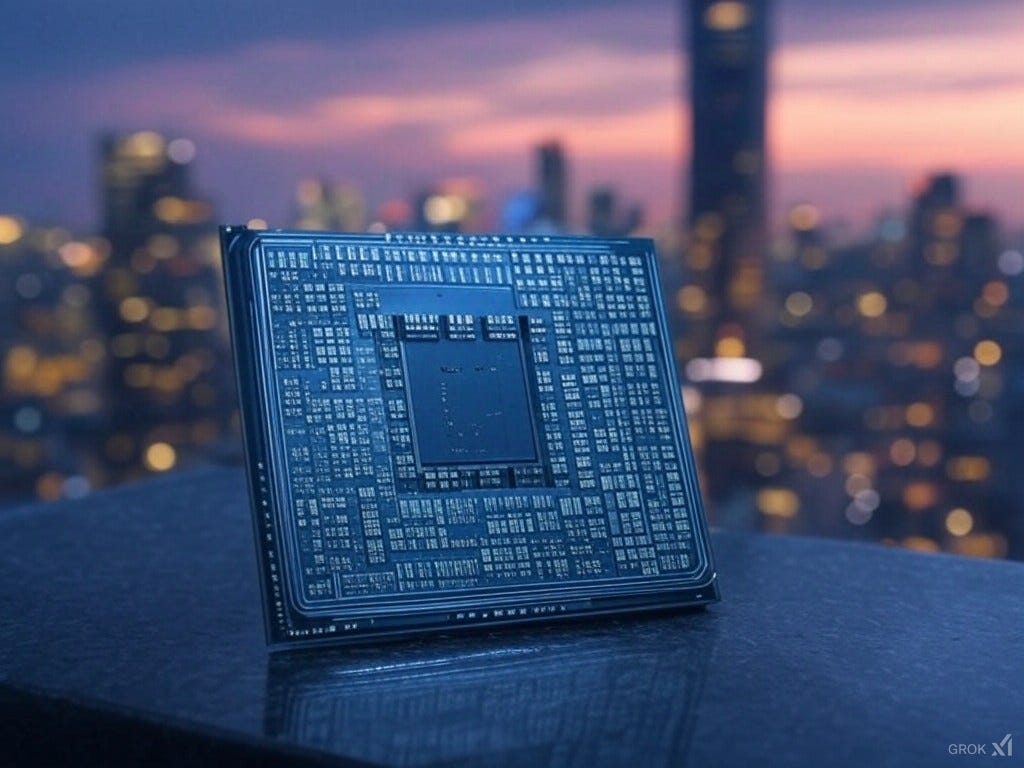Lessons from Telecom Inform Future of AI
What AI policy can learn from Trump's First Administration To Mitigate Threats From China
As Huawei aggressively moves to challenge U.S. dominance in AI chips, backed by the Chinese Communist Party’s heavy hand, President Trump has already shown he understands the stakes. In just his first week, he's rolled back the Biden Administration's innovation-stifling regulations, restored promises of free speech to the technology, and will reportedly announce $100 billion in private investment for AI data centers. But to truly secure America's AI leadership for generations to come, we need to learn from our recent past.
We've seen this movie before - when our dependence on Chinese telecommunications equipment and fragile supply chains crippled critical infrastructure during COVID. Now, experts warn that a 20 percent spike in AI chip demand could throw powerful chipset supplies into chaos again, just as China positions Huawei to repeat its telecommunications playbook in AI - using state backing to undercut competitors, develop a full-stack technology solution, and create dangerous dependencies on a single technology provider.
President Trump understood how to counter this strategy during his first term when his administration pioneered a holistic approach that broke America's dangerous dependence on Chinese telecom equipment. That visionary policy didn't try to kneecap American companies through punitive regulation, as the Biden Administration seemed determined to do with AI. Instead, it created the conditions for Western alternatives to emerge and thrive by promoting standardized interfaces that allowed equipment from different vendors to work together seamlessly. The result? A vibrant ecosystem of American and allied companies competing to build secure 5G networks.
We need that same bold leadership now for U.S. AI infrastructure. Today, over 90 percent of advanced AI chips in our data center infrastructure come from a single American company. But the challenge isn't just about hardware - it's about the software that powers AI development. Just as mobile app developers need tools to write applications, AI developers need sophisticated software platforms to harness the power of these specialized chips. Today's leading AI software platform, CUDA, has enabled remarkable innovations and helped create a generation of skilled developers. But as AI becomes critical infrastructure for our economy and national security, we need interoperable interfaces between compute, networking, and storage in our AI data centers to ensure our developer ecosystem can thrive across multiple hardware platforms, just as Open RAN enabled innovation across different types of network equipment.
The solution isn't heavy-handed regulation or breaking up successful American companies, it’s about creating the conditions for innovation for more successful American companies. For instance, the Trump Administration can use the power of the purse - federal procurement power, which represents $92 billion in annual IT spending - to encourage interoperability in our data centers. Federal agencies could require that AI infrastructure purchases support open standards for hardware and software integration, creating immediate market demand for interoperable solutions while ensuring taxpayer investments strengthen rather than fragment our technological base.
This approach has proven to accelerate, not slow, innovation. When telecommunications networks became more interoperable, it sparked an explosion of new technologies and companies. Similarly, when data centers support multiple vendors' AI accelerators, American startups can more easily bring new chip designs to market, fostering the kind of innovation ecosystem that made the U.S. the leader in previous technology waves.
The national security implications are clear. China is making a strategic push for AI dominance, with Huawei developing alternative software frameworks to compete with Western solutions. And beyond a nation-state actor, relying on the technology of a single vendor gives rise to monoculture, increasing the vulnerability of our networks by tying them to potential issues or limitations associated with one specific vendor's hardware, similar to how a monoculture in agriculture can be susceptible to disease if only one type of crop is grown.
With experts warning about the fragility of concentrated supply chains, we can't afford to have our AI infrastructure dependent on a handful of providers any more than we could afford to have our 5G networks dependent on Huawei.
President Trump and Vice President Vance have set forth visions of a renewed U.S. industrial policy to help America win again. They recognize that sometimes the free market needs a push to prevent dependency on potential adversaries. Smart procurement policies that encourage interoperability and competition aren't about imposing burdensome regulations - they're about creating market conditions that will keep America's tech sector competitive for decades to come.
President Trump's early actions show he grasps both the promise of AI and the perils of letting China dominate this critical technology. By applying the successful principles of his 5G Fast Plan to AI infrastructure, his new administration can ensure America builds an open, interoperable, and secure foundation for AI innovation - before another chip crisis or Chinese market manipulation catches us unprepared.


